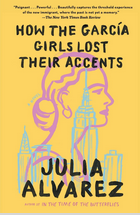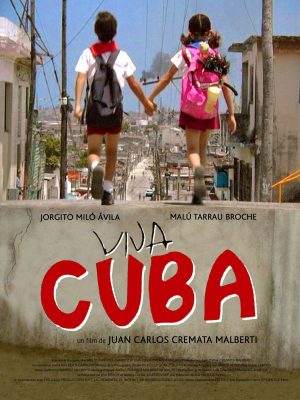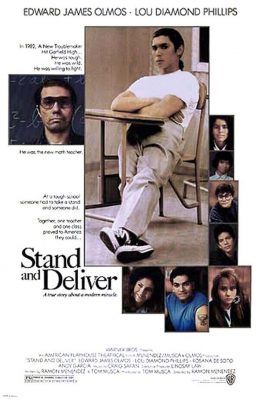Our Message
Latino identities are complicated…often confused as a race, but the term refers to ethnicities. Latinos are often thought of as a homogenous group, there has been a false sense created that we all fit certain criteria and stereotypes. In reality Latinos come in all shapes, skin tones, religions, cultures and generations. To try to fit them all in one bubble is a disservice to all the rich/different cultures and traditions that they encompass.
Latinos started in the U.S. as Mexican Americans and Puerto Ricans but now they are a mix of things, they have evolved as a collective group in the United States. As their population grows we learn that there is not one clear cut way to be Latino. An increasing amount of Latinos have intermixed with other Latino nationalities so now we see Dominican and Mexican Latinos, Colombian and Ecuadorian, Honduran and Salvadoran, the list goes on! Identity is a construct so we continue to build
Cultures in the Latino population are all significantly different. Although, Latinos have many differences with non-Latinos, there are also notable intra differences. For example, Mexicans and Colombians may both speak Spanish but they have different dialects and mannerisms. They have different cuisines, traditions, popular music, media and so much more. Latinos have a sense of unity, but if you pay attention you will notice how uniquely diverse each nationality is.
Overview
Latino identities are complicated...often confused as a race, but the term refers to ethnicities. Latinos are often thought of as a homogenous group, there has been a false sense created that we all fit certain criteria and stereotypes. Latinos come in all shapes, skin tones, religions, cultures and generations. To try to fit them all in one bubble is a disservice to all the rich/diverse cultures and traditions that they encompass.
Latinos started in the U.S. as Mexican Americans and Puerto Ricans but now they have evolved as a collective group in the United States. As their population grows, we learn that there is not one clear cut way to be Latino. An increasing number of Latinos have intermixed with other Latino nationalities so now we see Dominican and Mexican, Colombian, and Ecuadorian, Honduran and El Salvadoran, the list goes on!
Cultures in the Latino population are all significantly different. Although Latinos have many differences with non-Latinos, there are also notable intra differences. For example, Peruvians and Argentinian may both speak Spanish, but they have different dialects and mannerisms. They also have different cuisines, traditions, popular music, and media. Latinos have a sense of unity, but if you pay attention, you will notice how uniquely diverse each nationality truly is.
Objective 1:
Analyze the construction of race and identity in the United States
Objective 2
Discuss movements like the Mexican and Chicano Movement in conjunction with the Civil Rights Movement
Objective 3
Contextualize cultural diversity among Latinos
Objective 4
Recognize the impact of the muted history of Latinos in the United States
Objective 5
Value diverse the identities in the goal of creating a more welcoming environment for Latinx and African American students in the classroom
Objective 6
Show how the roots of Latinos also dictate how they identify and what makes them diverse
Important Terms to Know
Words you will need to know to understand the language being used in regards to the subject of Migration and Mobility.
Full List of Terms:
Cultural Capital
This term describes the things that help us move through society, such as knowledge, skills, and education. This is typically learned through one’s culture.
Deficit Model
This term describes the tendency to focus on a student’s weakness instead of the student’s strength.
Educational Equity
A measure of achievement, fairness, and opportunity in education
Generation 1.5
This term is used to refer to U.S.-educated ESL students who usually arrive in the United States after they have completed primary school in their home countries. They are between the first and second generations and that is what gives them their nickname.
Inquiry Based Learning
An approach to learning that emphasizes the student’s role in the learning process. Rather than the teacher telling students what they need to know, students are encouraged to explore the material, ask questions, and share ideas.
Microaggression
An indirect, subtle, or unintentional discrimination against members of a marginalized group.
History of Identity, Intersectionality, and Culture
Some historical events have been influential to the development of Latino identities, cultures, and intersectionality’s. They have served as catalysts or have created spaces for Latinos to fully and authentically express themselves. But before we dive in, we should ask ourselves What does the term “Latino” mean?
Historically, the term has been used to describe anyone whose origins are in Latin America. Latin America encompasses South and Central America, as well as the Caribbean nations and islands, making up almost 9% percent of the world population according to the UN as of 2019. Europe encompasses about 9.5% of the world’s population as well, and yet, much of European identity and cultural nationalities can be easily distinguished from one another. Can the same be said for Latin America? Or have we allowed this homogenizing term to completely overlook the vast diversity that exist amongst those we ascribe it to?
The goal of this page is to allow students to delve deeper into the meaning of “Latino” and some of the ways it has been used to describe thousands of diverse groups of people. Students will be able to explore how Latino Identity has evolved in the 20th and 21st century as migration patterns to the United States fluctuated over the course of the last 100 years. Latino identity has been constructed and reconstructed for decades, whether it was by European imperialists or by generations of Latin Americans who have migrated to the United States when attempting to challenge the Black and White narrative that still continues to dominate in our current framework of US identity.
CT: Connections To Local Realities
This video explores the challenges to dual language teaching. Even when schools truly want bilingual fluency for children, providing it can be more difficult than it looks. Part of the problem lies in how we measure competencies. Mastery tests measure one’s ability to speak English assuming one has spoken nothing else. Bilingualism takes longer to develop, and one must use a longer measuring stick. Unfortunately, to compound lack of proper measurement standards, overcrowding in classrooms diminishes language teaching effectiveness as well.
As we have learned through the history section, there is a long timeline of people who are for and against bilingual education. Many schools today focus on English-only methods, and perceive Spanish-speaking skills as a hindrance to language success in a deficit-model way of thinking. Drilling grammar into children, rather than using more interactive methods of teaching that incorporate students’ cultural knowledge bases, often alienate children and lead to feelings of cultural invalidation. Daisy Hernandez in her autobiography Cup of Water Under My Bed and Diane Guerrero in her book In the Country We Love: My Family Divided both discuss their feelings of cultural rejection in school.
The video "Learning Matters: The Language War In New Britain" also shows that parents and students need more support from schools as they face personal issues that can affect students and their participation in class.
Studies have proven that prophecy in a language is determined by conversations people can hold in that language rather than the grammatical aspect of the language. According to the 2017 consensus study report, “Promoting the Educational Successes of Children and Youth Learning English,” it was discovered that students acquire language proficiency within 4 to 7 years with bilingual education. However, without bilingual education, it takes students 7-9 years to achieve language proficiency.
The following video "Personalized Learning at Hartford Public Schools" reveals the benefits of personalized and interactive teaching, which contrasts from the overcrowded and noninteractive teaching seen in the previous video. It is important to see the contributions that are being made in our state as we improve the quality of education.
For further information on the contributions that the Latinx community has made to Connecticut education and local organizations, visit the "Puerto Rican Impact on CT" and "Social Justice" under our tab.
Learning Matters: The Language War in New Britain
Personalized Learning at Hartford Public Schools, CT
Latino Education and Economic Progress: Running Faster but Still Behind
Teaching Your Topic
| 1. When approaching topics such as the ones discussed above teachers should approach them with an open-mind. Some of these topics may be sensitive so allow students to fully express themselves since this may be the first time they have been able to learn about these concepts in class. |
| 2. There may be some students who know more and others who know less about Latinos in the U.S. A good place to start would be with a discussion on what students know about these concepts as well as what they are interested in or wish to know more about. |
| 3. In classes where students are predominantly non-Latino starting out with basic terms and events would be a great foundation to set for them. |
| 4. Being that this class will introduce topics that may be new to many, it can already be difficult enough for students to fully grasp them. To make this process more approachable to them it will be important to acknowledge that the kids will have different learning styles. Therefore, different activities/workshops/lessons will resonate more with some as compared to other students. Including a mix of auditory, visual, or hands on when capable will be a great way to help everyone. |
Companion Pieces for Students
We have listed several companion pieces that teachers can use or recommend for students. The first four selections are books that share diverse stories from the Latinx community. The second row includes four movie recommendations suitable for classroom use.

Mexican White Boy by Matt De La Pena
Danny Lopez, the protagonist, goes to the South of San Diego over the Summer to visit his father’s family where there are more Hispanics compared to where he originally lives. He lives in northern San Diego County and plays baseball at an elite private school which makes him feel out of place when he is in South San Diego. He does not feel like he belongs anywhere while he tries to fit into his dad’s Mexican family. Since he is white compared to the rest of his dad’s family and does not speak Spanish he feels like he does not feel comfortable and notices the privilege he has. Throughout the book he tries to find a place to belong with his dad’s family but ends up starting his own path and owning his identity

The Poet X
Fifteen-year-old Xiomara, who goes by X, uses poetry to express her thoughts and feelings about her strict family, her faith, and her growing sense of identity. Through her writing, she finds her voice and the courage to stand up for herself. Written in verse, this powerful story highlights the importance of self-expression and finding strength through words. The book was well received and won multiple awards at the 2019 Youth Media Awards.

How the Garcia Girls Lost Their Accents
This coming-of-age novel follows four sisters Carla, Sandra, Yolanda, and Sofía who immigrated from the Dominican Republic to the United States with their family. Through a series of interconnected stories told in reverse chronological order, the book explores how each sister adapts to a new culture while holding onto her roots. Themes of identity, assimilation, memory, and the immigrant experience are woven throughout, offering a powerful look at what it means to belong to two worlds.

Gabby Garcia's Ultimate Playbook
This fun and energetic story follows Gabby Garcia, a confident Latina pitcher who loves baseball and always aims to be the best. When things don’t go as planned, Gabby learns about teamwork, friendship, and how to handle challenges with a positive attitude. It’s a great story about believing in yourself and growing through mistakes.

Real Women Have Curves
This is the story of Ana, a first generation Mexican-American teenager on the verge of becoming a woman. She lives in the predominantly Latino community of East Los Angeles. Freshly graduated from high school, Ana receives a full scholarship to Columbia University. Her very traditional, old-world parents feel that now is the time for Ana to help provide for the family, not the time for college. Torn between her mainstream ambitions and her cultural heritage she agrees to work with her mother at her sister's downtown LA sewing factory. Over the summer she learns to admire the hardworking team of women who teach her solidarity and teamwork

Viva Cuba
This Cuban film tells the story of Malú and Jorgito, two close friends whose families come from very different backgrounds. Their mothers disapprove of their friendship because of class and political differences. When Malú learns her mother plans to leave Cuba, she and Jorgito run away on a journey across the island to find her father and stop the move. Along the way, they discover the true meaning of friendship, loyalty, and courage.

Stand and Deliver
Based on a true story, this film follows Jaime Escalante, a high school math teacher in East Los Angeles who inspires his students to believe in themselves and achieve success. Despite facing challenges and low expectations, Escalante motivates his class of struggling students to master calculus and prove that hard work and determination can overcome any obstacle.

Mucho Mucho Amor: The Legend of Walter Mercado
This documentary tells the story of Walter Mercado, one of the world’s most famous astrologers and TV personalities. Raised in Puerto Rico, Walter became known for his dazzling capes, positive energy, and message of love that reached millions of Latinx viewers across the world. The film explores his rise to fame, his mysterious disappearance from television, and his lasting influence as a cultural icon.
Lastly, we’ve included four videos that explore different perspectives on bilingualism and education. Two are slam poetry performances that reflect on the educational system and bilingual identity, one is a short informational video about the benefits of bilingualism, and the last features individuals reclaiming their heritage by learning Spanish later in life.
Dylan Garity - Rigged Game
Anacristina - "On being bilingual"
The benefits of a bilingual brain - Mia Nacamulli
Latinos learning Spanish in the US: 'I really wanted to discover my heritage and reclaim it'
Student Activities
By: Maria and Hawa